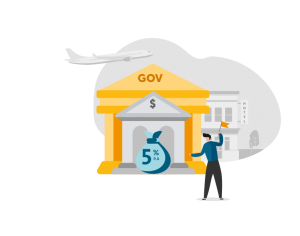Need to arrange a bridging loan as a short-term funding option? Bridging loans typically used by property buyers to cover the shortfall when buying a new property and waiting for a traditional mortgage to be approved or capital to be released from the sale of their current home.

(image: OCBC)
You have fallen in love with your ideal home, and your offer has been accepted. There is just one snag – you can’t get shot of your old house quickly enough and the deal is at risk of falling through. A bridging loan may be the only way to keep the deal on track.
But be careful before you dive in. Bridging loans are expensive and are usually considered to be a last resort.
If a bridging loan can tide you over in the short term then the extra expense may save you from losing money already spent in the purchase process, as well as reducing stress, if you do it for the wrong reasons you may end up in serious financial difficulty.
For buyers with an imminent purchase but a problem with their own sale there are two options – taking on another mortgage or a bridging loan.
But beware, both will leave the borrower paying off two loans at once, and experts say bridging loans should not be used as a way of simply trying to beat property chain problems. Unless you know when your home sale will go through – for example if there was glitch in a survey that can be remedied in a month or two – be careful about taking on two mortgage-sized debts.
Bridging loans can be beneficial in several circumstances but are generally speaking, aimed at experienced landlords and property developers, including those purchasing at auction.
WHAT IS A BRIDGE LOAN?
A bridge or bridging loan is a short term secured loan. Property buyers typically use bridging finance to “bridge” the gap between the purchase of a new property and the approval of a traditional mortgage, the sale of the new property or the release of capital from an existing property.
Could Bridging Finance Help You?
Bridging finance may be able to help you if:
- You want to move but are struggling to sell your property and need to buy your new home quickly
- You’ve lost your buyer but don’t want to let your purchase fall through
- You want to purchase a property that isn’t currently mortgageable or habitable
- You want to convert/refurbish/develop a property
- You want to purchase an auction property
- You want to purchase land so you can self-build a property
- You require funding without monthly interest payments for a short period of time
2 Types Of Bridging Loans: Capitalised Interest Bridging Loan & Simultaneous Repayment Bridging Loan
Capitalised Interest Bridging Loan
Under the capitalised interest bridging loan, the bank/financial institution will finance your new home (up to 80%). Once the sale of your current property is completed, the repayment of the bridging loan will start. Interest will be accrued and payable to the bank/financial institution for the whole period of your bridging loan.
Simultaneous Repayment Bridging Loan
But even if you haven’t sold your property yet, you can still take a bridging loan. This is the purpose of the simultaneous repayment bridging loan. The simultaneous repayment bridging loan is for homeowners who have the intention to sell off your current property. But you might not have found a suitable buyer yet. In such cases, you can take the simultaneous repayment bridging loan to pay for your new home while continuing to pay off the home loan for your current property. The bank/financial institution will likely give you up to 12 months to sell off your property. After which, you will need to repay your bridging loan once you receive the sales proceeds.
What Do You Need To Qualify For Bridging Loans?
In order to qualify for a bridging loan, you will need to show proof that you are waiting for sales proceeds from your previous property. This can work by providing the Option to Purchase (OTP) agreement document that is signed by the buyer.
Are Bridging Loans Only Limited To Private Property Owners?
Bridging loans do not have a specific target audience. Regardless of whether you are a private property or HDB owner, you will be able to apply for a bridging loan as long as you have the OTP agreement for your current property. It also doesn’t matter whether the property you are selling away is an HDB or private property.
Where Can You Get A Bridging Loan?
Bridging loans are offered by most financial institutions and banks in Singapore. Typically, if the bank or financial institution offers home loan, it will also offer bridging loan to you.
For bridging loan, the interest rate payable is pretty stable across the industry. Banks and financial institutions are likely to offer very similar interest rates to each other. Bridging loan can help you in your bid to become a multi-property owner? Get in touch with iCompareLoan where our loan specialists will show you how to leverage on bridging loan in your second property purchase.
A good place to start looking for temporary bridging loan is with loan consultants. Loan consultants have good links with multiple lenders and can help you lend the best deals with the lowest interest rates. The services of loan consultants are usually free – which is why you should not hesitate consulting one.
The post Bridging loans can help you cover a shortfall when buying a new home appeared first on iCompareLoan Resources.

